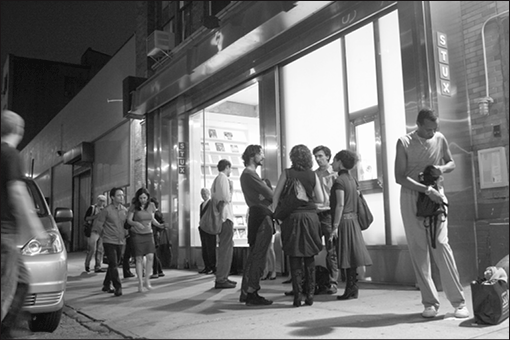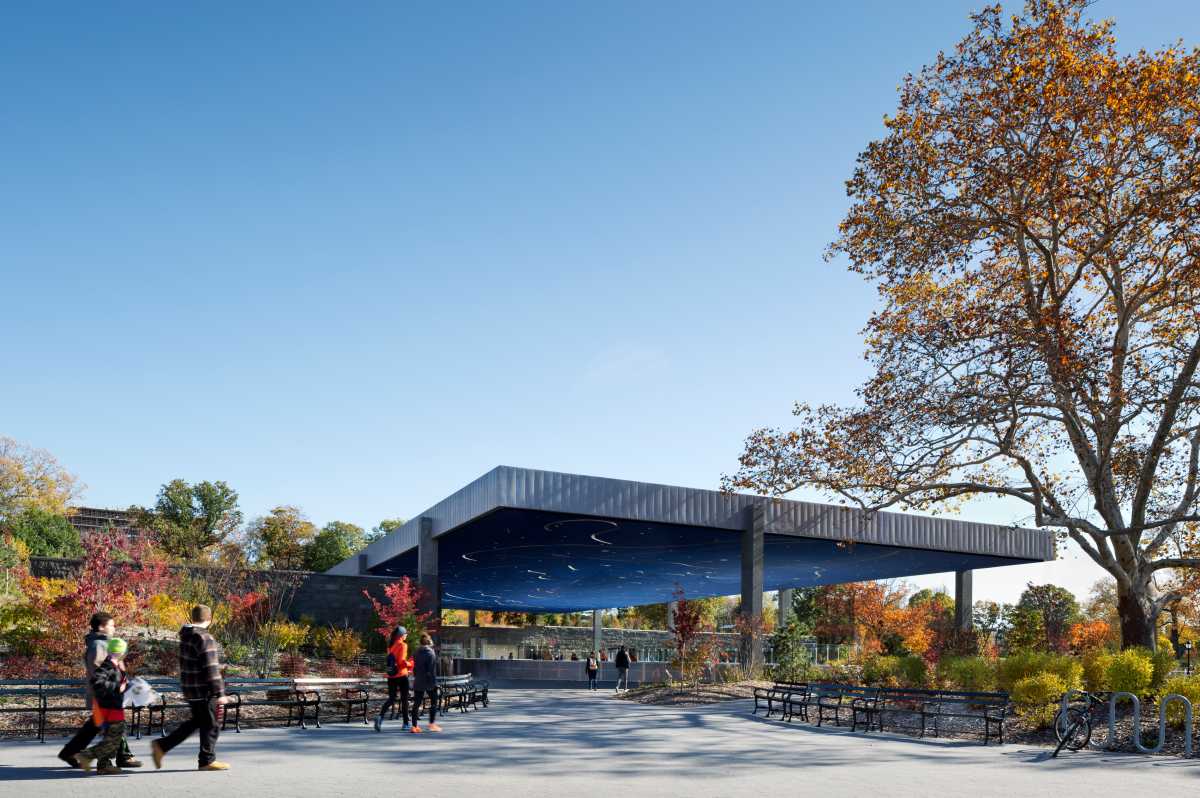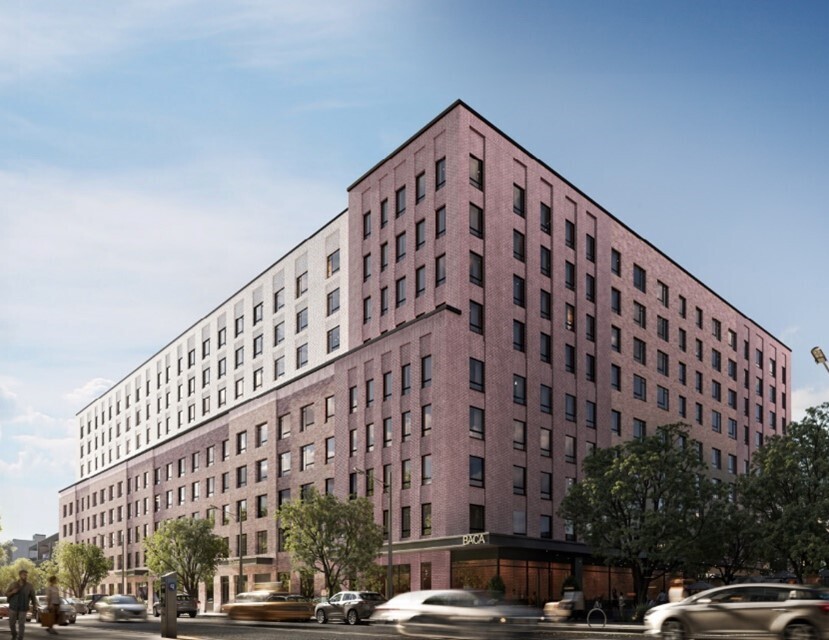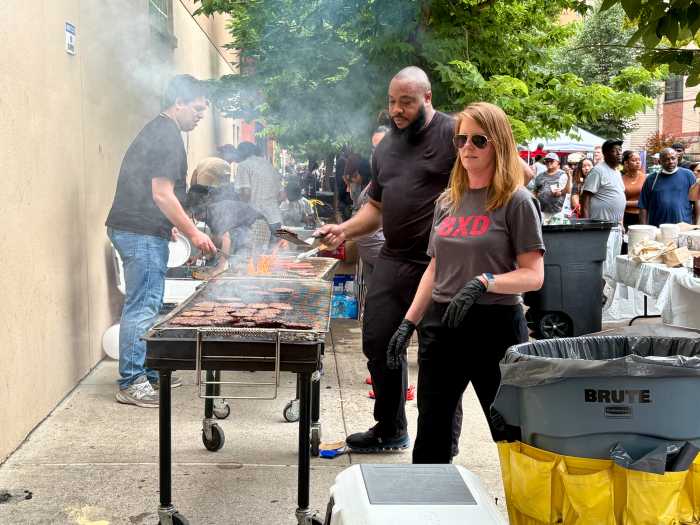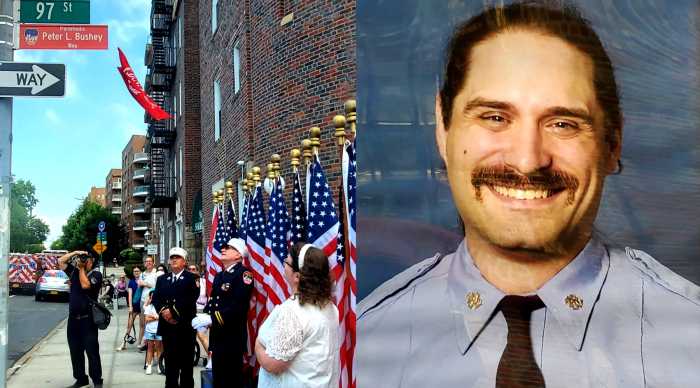by Nicole Davis
In 1987, the Dia Foundation converted a four-story warehouse on West 22nd Street into its first large-scale, rotating exhibition space in New York City, Dia:Chelsea, a move that seems prescient now but defied logic at the time. Soho was the epicenter of New York’s contemporary art world, and this section of Chelsea was far off the cultural map. Yet that was precisely the appeal.
“Dia has always had this idea, and this was something that [artist] Donald Judd talked about, that you put aside time to look at art,” says Dia’s curator, Lynne Cooke. “You make a commitment of time to look carefully, and that can often involve taking a journey…So the fact that people gave up time in order to come to Chelsea and spend a couple of hours looking at art had an ethos to it that was very much in keeping with Dia’s spirit.”
Gallerists clearly took note. Though Larry Gagosian’s short-lived Chelsea gallery in 1985 was technically the first in the neighborhood, Matthew Marks was the pioneer who opened a commercial gallery there in 1994 and stayed for good. He was soon followed by Pat Hearn, American Fine Arts, Paul Morris, Paula Cooper, Barbara Gladstone, and Metro Pictures — the original seven homesteaders who paved the way for West Chelsea’s transformation from a Manhattan neighborhood of auto-body shops to the foremost art district in the world.
Chelsea’s international preeminence in the now-global art market is underlined by Art Basel, the world’s leading annual fair for contemporary art. Competition by galleries to exhibit at Art Basel is ferocious, harder, as one gallery owner quipped, than getting into an Ivy League college. At Art Basel 2007, the 31 galleries selected from Chelsea were easily the largest contingent from anywhere, followed by 22 from Berlin, 18 from London — and just two from Soho.
Chelsea’s commercial gallery scene now represents the art establishment, and like any establishment, faces a host of challenges to its number one position. The advent of art fairs, the intrusion of auction houses into the world of galleries, and the impact of the Internet all threaten Chelsea’s dominant position in the global art market, which Chelsea Now will be investigating in a series of articles, beginning with Chelsea’s most pressing threat: the rise of the Lower East Side as a more attractive, cutting-edge gallery district, anchored by the New Museum, which opened this month with much fanfare at 235 Bowery.
Chelsea’s Rise to Dominance
Chelsea’s transformation into the most important contemporary crt gallery district in the world occurred with stunning speed. Back in 1996, Art Now’s Gallery Guide listed just 12 in Chelsea. This August’s Guide listed 230. Even this amazing number is a major underestimate since galleries have to pay to be in the Guide, and some do not. Spot checks of key Chelsea buildings such as the Whitehall, at 511 W. 25th St., which is chock full of galleries, suggest that about 40 percent of Chelsea’s galleries are not in the Guide, which would therefore put the actual total around 320, dwarfing art districts in the United States and elsewhere. Galleries in Soho, meanwhile, once New York City’s most dynamic gallery neighborhood, have fallen to about 50.
Complicating the debate over Chelsea’s future as an art gallery district is the fact that the booming global demand for art is coinciding with booming demand in the local commercial real estate market. Indeed, it was rising rents that undid so many galleries in Soho in the 1980s. Miles Manning was at that time director of the government-subsidized Danish Contemporary Art Center, which rented the ground floor of 420 Broadway, a building with a star cast of gallery owners including John Weber, Leo Castelli, Ileana Sonnabend and Charles Cowles. Manning recounted the carnage that occurred as Soho landlords realized they could get far more rent from boutiques than from galleries: “Our landlords started coming to us in the second year [of their two-year lease, which had a three-year option beyond that] to get us up to the fourth floor, but they really wanted to get us out. Meanwhile most of the ground floors in other buildings were closing or moving, because the fashion stores were moving in. We saw the handwriting on the wall. Mary Boone was across the street. She had the same landlord as we did. Her lease came due, they had a fight, and René Lazard, the German fashion designer, moved in. After Mary Boone moved out of Soho, we were looking around. It was May 1997. There were 28 to 30 galleries in Chelsea then. Finally the landlord said, ‘We want you to get out. What will it take?’ We said if you find us comparable space in Chelsea. They offered us $250,000, plus they found a space for us in Chelsea.”
The groundwork for commercial galleries in Chelsea, of course, had already been laid by Dia. When the young gallery owner Matthew Marks opened up in Chelsea, he chose the same stretch of W. 22nd St. as the not-for-profit museum. Marks then quickly encouraged his friends Pat Hearn and Paul Morris to move their galleries from Soho to Chelsea, and the ball just kept rolling. So when it was time for DCA and other Soho galleries to flee, they chose Chelsea, which at that time had no coterie of shoppers seeking high-end clothing. Indeed, the boutique Comme Des Garçons on W. 22nd St. has for years been almost the only such store, surrounded by art galleries.
Learning a lesson from Soho, however, most of the galleries that came to Chelsea in the first wave from 1993 to 2000, and had sufficient capital, bought their spaces so as to insulate themselves from the commercial rental market. The vast majority of other galleries signed leases and are at the mercy of the commercial real estate market, which in Manhattan has no controls. Each landlord and gallery negotiate individually, with lease lengths varying widely — as short as two years, often five, and as long as ten — with a number of types of options to renew. Landlords vary widely, too. At one extreme are benevolent patrons such as Gloria Naftali, who, herself a gallery owner, charges a host of lucky galleries below market rents in her building at 509 W. 26th St. At the other extreme are self-avowed profit maximizers like the landlord who told his tenant Kinz, Tillou + Feigen that he intended to triple the rent on their ground-floor space. The gallery then moved to the 11th floor of 529 W. 20th St., owned by the same landlord.
The main protection for Chelsea galleries comes from the zoning codes. Chelsea was able to flourish as an art gallery district because it was zoned M1-5, which permitted light industrial and commercial establishments such as galleries and retail stores, but not residences. Very few businesses, including art galleries, can match the profits a landlord in Manhattan can make from allowing land to be used for a towering condominium.
In 2005, New York City re-zoned much of the land around Chelsea’s core art gallery section from M1-5 to a commercial (C) designation, which also allows residential development. This was the West Chelsea Rezoning, and the resulting spate of condos is already apparent.
The West Chelsea Rezoning was part of a deal to appease the Chelsea Property Owners, an alliance of those who owned property under and next to the High Line, which they had long wanted to demolish so they could develop their property. Only when the city promised to allow them to transfer their development rights to other sites — basically potential condo sites that did not adjoin the High Line — did they drop their opposition. The Department of City Planning then adopted the West Chelsea Rezoning on May 25, 2005, and soon after the Certificate of Interim Trail Use was granted by the federal government on June 13, 2005, allowing the city to convert the High Line into a park.
In the West Chelsea Rezoning, the city deliberately retained the original manufacturing zoning for what it saw as the core of the gallery section — Tenth to Eleventh Avenues, from W. 24th to 27th Streets and W. 20th to 22nd Streets — with the intention of protecting the galleries from the commercial pressures that would be unleashed should their landlords have the option of building residential high-rises on their sites.
Still, the impact of zoning changes is not entirely predictable, since they are not always strictly enforced. In Soho, for example, after the defeat of Robert Moses’ plan to build the Lower Manhattan Expressway, the Department of City Planning decided to legalize the situation of the artists there, who were living illegally in an area zoned for manufacturing. In effect, though, the certification requirement that limited legal residence to artists was, and still is, widely ignored by the D.C.P., so Soho lofts traded freely on the residential market as if it were a residential neighborhood. This eventually helped turn Soho into an area that few galleries could afford, let alone young artists, while making real estate millionaires out of the pioneering artists.
What is sure is that the West Chelsea Rezoning will increase the pressures on those galleries who pay rent, and it will increase the temptations to sell to a real estate developer for those galleries that own their space. All of which ultimately means gallery churning. So far, however, a continuous influx of new galleries into Chelsea has kept such turnover at bay.
A Gallery District without Artists
The cost of New York real estate, and not commercial zoning, explains why Chelsea developed as a gallery neighborhood without a resident population of artists. Soho too was zoned only for manufacturing, but when Robert Moses in 1959 announced plans for the 10-lane Lower Manhattan Expressway, which would have wiped out Soho, landlords had to drop their rents since the area seemed doomed. Artists then moved en masse into its cast-iron industrial buildings — ideal for the space they needed — on what seemed a strictly short-term basis, since their presence was not even legal. No one expected the epic struggle that would eventually defeat the expressway project in 1969.
There was no such fire sale to encourage artists to relocate to Chelsea, however. Even today, Jeff Koons, one of the very few contemporary artists working in Chelsea, does not live there, but rather has a large studio at 601 W. 29th St., from which he directs a staff of 87 people who execute his designs. Without a companion group of resident fellow artists, Koons recently told a group during the New Yorker Festival that he feels cut off in Chelsea. “I miss Soho in its heyday, the bars and restaurants and excitement. It’s more isolated here, though it’s good for my work since there aren’t a lot of distractions!” Although there is no community of artists in Chelsea, there is by now a lively community of “gallerists,” the myriad people who own, and work, in the galleries. In short, Chelsea represents the triumph of the commercial galleries.
The L.E.S.: Red Herring or a Real Threat?
Today, though a few galleries like Deitch remain in Soho (or in the case of Team, have moved back there), the only neighborhood with any kind of draw on par with Chelsea is the newly trendy Lower East Side.
Its catalyst as a possible rival is the New Museum of Contemporary Art, designed by two star Japanese architects, Kazuyo Sejima and Ryue Nishizawa, and whose opening was much more dramatic than the quiet way the Dia moved into Chelsea.
Anticipating critics, Laura Hoptman, Senior Curator of the New Museum of Contemporary Art, stresses that the New Museum is not an interloper since it has always “had a relationship to Downtown.” Conceived in 1977 as part of the New School of Social Research, the New Museum first opened as a physical entity on Lower Broadway in 1983, and moved to temporary quarters at the Chelsea Art Museum in 2004. “So with our new Bowery building we are just moving back to the neighborhood,” said Hoptman. Also, while the New Museum’s architecture is decidedly untraditional — a seven-story stack of rectangular boxes shifted off axis in different directions — Hoptman stresses that the building’s exterior material — silvery galvanized, zinc-plated steel — echoes the area’s industrial past. “The building’s skin is a wonderful silver mesh that looks like industrial trash cans,” she says.
Certainly a new major cultural institution can transform a neighborhood, as Dia did in Chelsea. Less than a month old, already the New Museum’s impact can be felt. There are now roughly 26 L.E.S. galleries, of which six are listed in August’s Gallery Guide, double last year’s listing. At least two of these, Salon 94 and Lehmann Maupin, opened satellite galleries nearby to soak up the museum’s traffic.
Some gallerists, however, chose the L.E.S. not because of the New Museum, but precisely because it isn’t Chelsea. When C. Sean Horton of Sunday L.E.S. gallery moved to 237 Eldridge St. a year and a half ago, “I was content to be among five other galleries,” he said. “The New Museum was just an added benefit.”
In fact, the motivating factor for Horton sounds awfully similar to Dia’s inspiration for opening in Chelsea: carving out time for art. Unlike Chelsea’s chockablock 300-plus galleries, where “there’s this overwhelming sense of pressure to see as much as you can,” the lower density of galleries on the L.E.S. allows some breathing room between exhibits, “so you have time to process what you’ve just seen. I think the slower pace allows for a deeper understanding of the art,” said Horton.
Several of those at Chelsea’s most seasoned galleries are also open about the appeal of the L.E.S., which represents a hipper and edgier alternative to Chelsea (and the Meat Market), often viewed as the essence of power and money — a hard world for newcomers to crack. Said Natalia Sacasa, the 31-year-old senior manager of Luhring Augustine, “I consider a lot of the people on the L.E.S. to be my peers. If I was starting out, I’d go there too.”
Yet it exerts a pull among even seasoned gallerists like Hudson of Feature Inc., who has relocated to the L.E.S. after nearly a decade in Chelsea. When the lease on his ground-floor space on W. 25th St. expired and the landlord raised the rent, he began looking for a new space, first in Chelsea, then Midtown and the far West Village near Gavin Brown, until he found a comparably sized place on the Bowery that will open January 12.
“It feels great to be Downtown again,” said Hudson. “There are people here for many reasons, so it’s not homogenous race-wise or use-wise.” His space, he said, “feels very much like a Soho space, which I think is really beautiful and I find more appealing than the industrial spaces of Chelsea.” He won’t miss being in such close quarters, either. “The density of galleries — it’s overkill. Too much sensation decimates the ability to discern. Everyone’s in a rush to run around and see as much as they can see instead of being discriminating and selective.”
More will follow his lead, he predicts. While looking for gallery space on the L.E.S., “I became aware of 10 other galleries looking down there for spaces,” he said. They were not necessarily from Chelsea, but “there are so many galleries looking to move from Chelsea, and everywhere else, like the Upper East Side” — that it’s only a matter of time before more Chelsea galleries move Downtown.
Others see the blossoming, too. “The L.E.S. seems like Chelsea in process, like planting the seed,” said Jeff Weiss, a co-founder of the collectively owned and run L.E.S. gallery Orchard. And landlords, apparently, have taken note. Hudson is paying roughly the same for his 3,000-square-foot space as he would in Chelsea. C. Sean Horton of Sunday L.E.S., meanwhile, is paying about half of what a gallery his size (900 square feet) would fetch in Chelsea, but he admits he has an extremely good deal, and that new galleries are now paying twice as much — i.e., the same price.
Still, the number of L.E.S. galleries remains tiny, just 4 percent of Chelsea’s, and will probably always play second fiddle for the simple reason that few spaces, aside from those on the Bowery itself, offer the same square footage that Chelsea’s blue-chip galleries occupy.
And Chelsea has its own cultural aces. The new Whitney branch, under design by Renzo Piano in the Meat Market alongside the High Line, will show art that is both Contemporary and historical, and will give the Chelsea art scene a massive boost from a not-for profit museum, albeit not for about four years when it opens. It will also partially fill the gap left by Dia, which in 2006, again because of financial problems, dropped the idea of transferring its Chelsea operation to the High Line site (Earlier this month, in fact, Dia finally sold its building at 548 W. 22nd St. to an unknown buyer.) Meanwhile the High Line, parts of which are set to open next year, will rocket Chelsea into the architectural vanguard, where the new Frank Gehry building on West 19th St. already points.
Another reason the rise of the L.E.S. may be a red herring is that there are several precedents for neighborhoods that initially seemed to be the next Soho or Chelsea, then quickly faded. The East Village made a brief mark as an art gallery neighborhood, challenging Soho from the early 1970s to the mid 1980s, but then fizzled. Williamsburg, once also touted as the next art spot, stumbled against the “not-Chelsea” factor. As Bellwether’s owner, Becky Smith, explained: “I moved here because the vital mass of Chelsea wasn’t worth fighting. The art world is in many ways incredibly non-creative. Our last two Williamsburg shows were heartbreaking. The art was so good, it killed me that hardly anyone saw it. We were having ‘bridge issues’ getting people to come. You’d get just 100 people a week and 300 at an opening. Here you get 1,000 to 2,000 a week and 500 at an opening.”
Competition for real estate may be the most serious blow to existing and potential L.E.S. galleries. There are signs that real estate values are already moving to a level affordable only to wealthy, residential tenants. A one-bedroom apartment now rents for $4,000 to $5,000 a month in the new Avalon Chrystie Place building above the Whole Foods on Houston Street one block north of the New Museum. Further, almost the entire area is zoned for residential use (C-6). Unlike Chelsea, the L.E.S. has few enclaves zoned for manufacturing where art galleries can shelter from a condo onslaught. Of course, if the real estate market collapses, all bets are off, but then the ramifications of such a collapse might also nip in the bud the incipient L.E.S. gallery upsurge.
The truth is that predicting the future of New York’s contemporary art neighborhoods is about as hard as timing the stock market. Everyone knows that a rising market will eventually turn south, but no one knows exactly or even roughly when. Likewise, it may be safe to say that one day Chelsea will no longer be the center of contemporary art, but whether that will be in three, 10 or 50 years is anyone’s guess.
Miles Manning, now one of New York’s most experienced gallerists, eloquently summed up the realist view of Chelsea’s future: “This is now the third, and longest, art market cycle that I’ve known. Of course it will eventually burst… Then people will get cautious, some galleries will close, and rents will go down. But then it’ll all go up again.”
Barring some unforeseen disaster or a massive condo boom, however, he doesn’t see Chelsea going the way of Soho.
“There aren’t the crowds of boutiques here that Soho had, partly because in Soho it was easy to get there by subway. Anyway, where else would we galleries all go? Other places in Manhattan like the L.E.S. don’t have the available inventory of suitable buildings, and we’re not all going to New Jersey or Queens or the Bronx — the people wouldn’t go there. It’s beautiful here. I look out of my window, and I can see the Gehry building. At night it’s lit up and really nice as the colors change.”
—additional reporting



